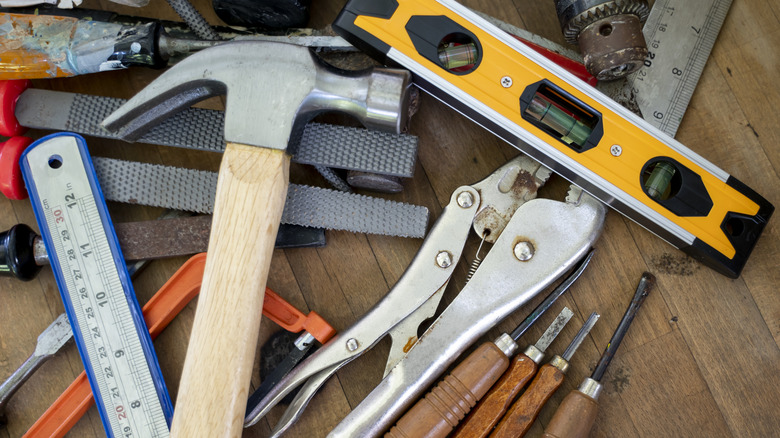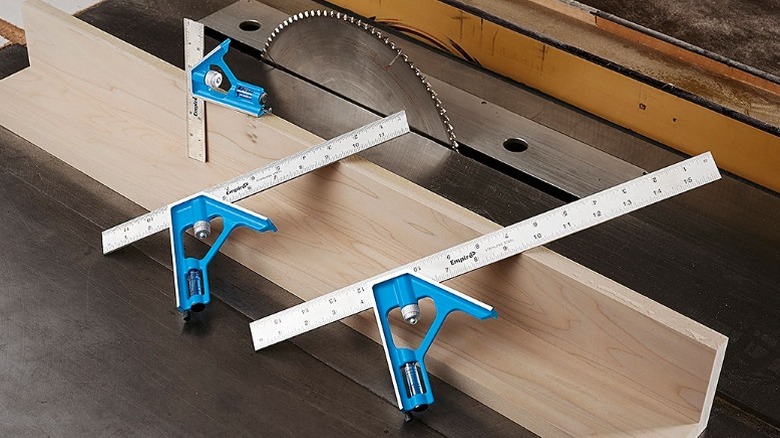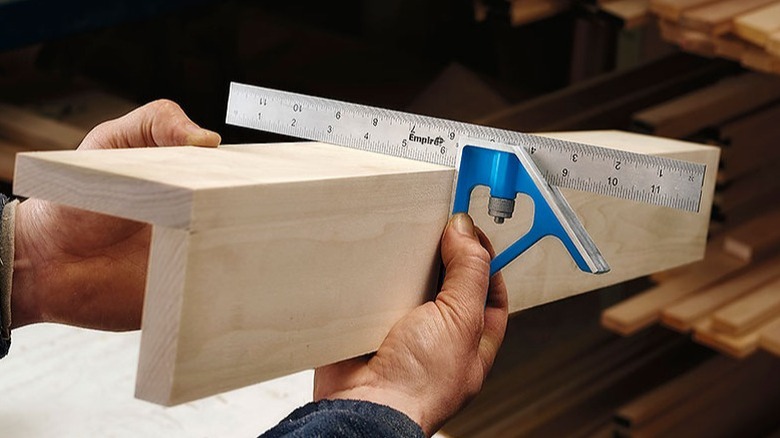The Cheap Woodworking Tool Every Enthusiast Should Know About
Woodworking can be an expensive hobby. There are budget versions of just about every tool, from drills to table saws, but the sad truth is that you nearly always get what you pay for. Enthusiasts who want clean cuts, square joints, and smooth surfaces know that sometimes it's better to 'buy-once-cry-once,' but that isn't always the case. There are a few more affordable woodworking tools worth adding to your collection out there, such as marking gauges, flushcut saws, and pocket hole jigs, that you can get for relatively cheap. Best of all, the affordability of these tools doesn't seriously impact their utility.
I've been woodworking for the better part of a decade. I've done everything from making picture frames and home furniture to large-scale home construction projects. In that time, I've had the opportunity to try out hundreds of different woodworking tools, but there are a few that I like to keep in my apron at all times. These are the products that I use the most and that I always want to keep on hand. Most people who already have a few woodworking projects under their belt are probably already familiar with the speed square — a triangular instrument that is designed to help you draw 45- or 90-degree lines. Because of its rigid form, this tool is also quite useful for lining up perfectly perpendicular corners when it comes time to align glue-ups or attach fasteners. It's an incredibly valuable instrument to have in your kit, but there's another type of square that's equally useful and perhaps even more versatile – The humble combination square.
What is a combination square?
A combination square is a little different from a speed square because it has moving parts. The general structure is composed of a metal ruler blade with a groove down the center and an L-shaped adjustable head. The ruler fits into a channel at the top of the adjustable head that allows the metal blade to slide across. This channel also has a tightening knob that adjusts a pin which fits into the channel in the center of the ruler, allowing you to loosen it when you want it to slide or tighten it when you want to lock it in place. Perpendicular to the ruler blade is a flat shelf that forms a 90-degree angle with the bottom of the ruler on one side, allowing you to make a square with the ruler and the head, and (usually) a 45-degree face on the opposite side, so you can turn the tool over to mark wood for diagonal cuts. The rulers typically come in one of four sizes: 6-inch, 12-inch, 16-inch, or 24-inch.
Many of them come with a scribing pin that fits into the base of the mounting head. This can be removed from the tool and used to scratch a mark into the wood that you're measuring. A lot of combination squares also include a vial in the mounting head that serves as a bubble level. This allows you to turn the tool on its side so that the shelf lies across the top of your project instead of the ruler. This gives the square even more utility since it means you won't need to keep a dedicated level on hand.
Combination squares are useful for nearly any project
Combination squares are useful in just about every woodworking application — from building birdhouses to framing walls in full-scale construction projects. One of the most common uses is for marking and checking 45-degree or 90-degree angles in order to make cuts. You can also slide the ruler all the way in and use the tool to check the flatness or squareness of your project.
A speed square can do both of these tasks as well, but a combination square beats a speed square in its ability to mark depths, heights, and step-offs. The ruler can be adjusted on the slide to a designated length that you want to mark and then locked in place. Once this is done, you can butt the shelf on the square's head against the edge of a piece of wood and use the extended length of ruler to measure the depth perfectly by marking the top. This is useful when you want to double-check the depth of a cut mark to make sure that it's even, but it can also be used for other things, like marking how far down to drill a hole or drive a fastener so that it meets jointed wood that's lined up on the other side.
You can find them on Amazon, or in most hardware stores and just about all of them are great woodworking tools that you can get for under $20. Those who are really looking to get the most bang for their buck can even head over to Harbor Freight and check out its selection of hand tools for woodworkers. The Pittsburgh 12-Inch Combination Square Set is available for just $7.99 and includes additional center and protractor heads.


